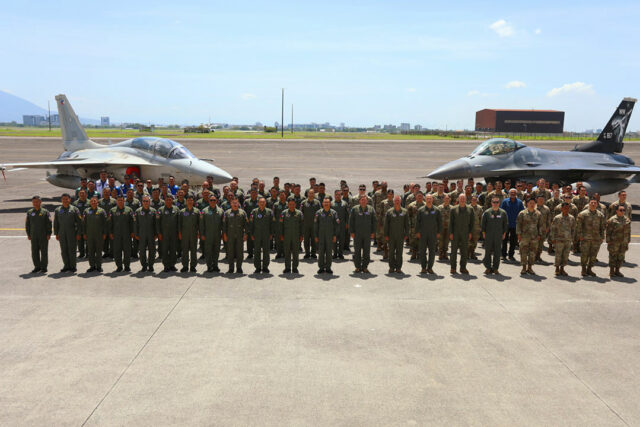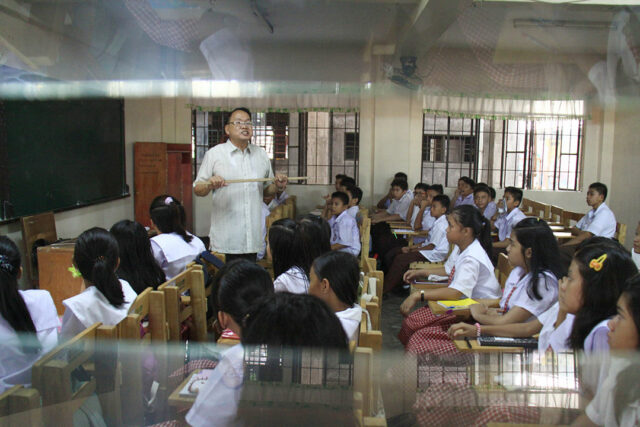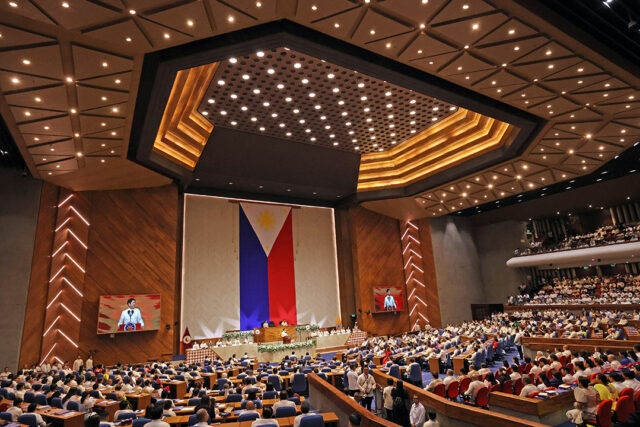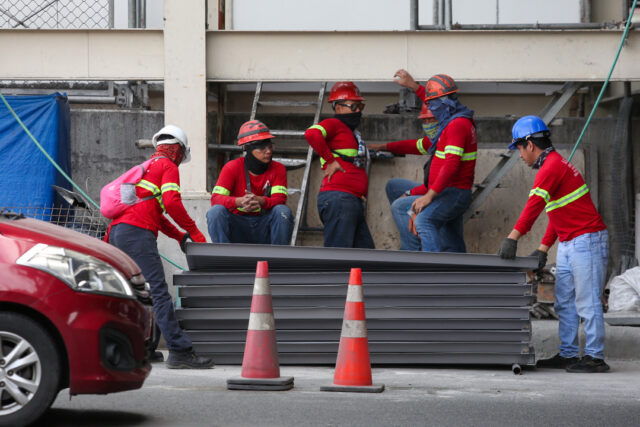PHL suspends classes, gov’t work; 2 low-pressure areas being watched
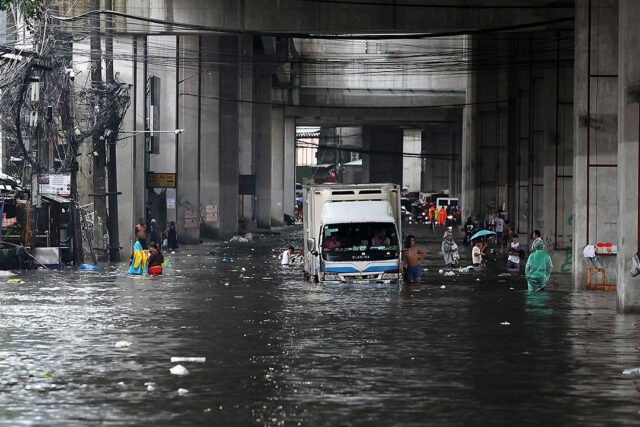
By Kyle Aristophere T. Atienza and Sheldeen Joy Talavera, Reporters
THE PHILIPPINE government on Monday suspended classes and government work for Tuesday, July 22, as the country continued to reel from the effects of the southwest monsoon and Severe Tropical Storm Wipha (Crising), which left the Philippine landmass at the weekend.
The state weather bureau said it was monitoring two low-pressure areas (LPA) in the country’s north.
In a Facebook post, Interior and Local Government Secretary Juanito Victor C. Remulla, Jr., said classes in both private and public schools had been suspended in Metro Manila, Zambales, Bataan, Pampanga, Bulacan, Cavite, Batangas, Rizal, Pangasinan, Tarlac and Occidental Mindoro.
It would be up to private employers whether to suspend work, he added.
Communications Secretary Dave M. Gomez told Palace reporters Mr. Remulla was authorized to announce suspensions.
As of 2 p.m., the LPAs had a “medium” chance of developing into tropical depressions in the next 24 hours, the Philippine Atmospheric, Geophysical and Astronomical Services Administration (PAGASA) said in its afternoon weather bulletin.
In a separate report, the weather bureau said one LPA was seen about 1,220 kilometers east of southeastern Luzon, while the other was estimated at 405 kilometers east of Calayan, Cagayan.
PAGASA said the southwest monsoon remained the dominant weather system affecting large swaths of the country.
The National Disaster Risk Reduction and Management Council (NDRRMC) said at least five people died from the combined effects of Crising and the monsoon rains, up from two the previous day. At least seven people were still missing.
The tropical storm and monsoon rains have affected almost 900,000 people from about 226,000 families in 1,556 villages. More than 20,000 people from almost 6,000 families were staying in evacuation centers.
Flooding was reported in 138 areas, with 125 floods having subsided and 38 receding as of the latest data. Seven landslides were also recorded — one in Central Luzon, two in Calabarzon, one in Western Visayas and three in Central Visayas.
The agency said 1,234 houses were affected across multiple regions, including Ilocos, Cagayan Valley, Calabarzon, Western Visayas, Zamboanga Peninsula, Northern Mindanao, Davao, Soccsksargen, Caraga, Bangsamoro, Cordillera Administrative Region (CAR), and Negros Island. Of these homes, 299 were totally damaged.
Infrastructure damage reached P219.37 million, affecting 44 structures in Ilocos, Western Visayas, Northern Mindanao, Mimaropa and Cordillera.
FARM DAMAGE
The Department of Agriculture (DA) at the weekend estimated farm damage at P53 million in Western Visayas and Mimaropa. More than 2,000 farmers working on more than 2,400 hectares of land were affected.
“Floodwaters have submerged fields planted with rice, corn and other high-value crops,” the agency said. “Poultry and livestock operations have also suffered losses. Meanwhile, damage assessments in the fisheries sector are still under way.”
It said the National Food Authority (NFA) warehouse in Mindoro was affected by flooding. In response, the NFA has been releasing rice stocks to local government units and national agencies, with 500 sacks already distributed in Palawan, it added.
The Philippine Crop Insurance Corp. (PCIC) has been tasked to conduct rapid damage assessments in affected areas to fast-track insurance claim processing. “The PCIC has instructed its personnel to extend full assistance to affected farmers and expedite the processing of their damage claims,” the DA added.
The department said it might offer additional assistance to affected farmers and fisherfolk, such as agricultural inputs through its regional field offices, rehabilitation support under the quick-response fund and zero-interest loans of up to P25,000 payable in three years.
Meanwhile, parts of the Cordillera Administrative Region were still experiencing brownouts due to the combined impact of Crising and the southwest monsoon, the Department of Energy (DoE) said in a separate statement.
Power and fuel supply across the country had largely normalized, except in certain areas of CAR, where restoration efforts continued.
As of 10 a.m., three electric cooperatives remained under close monitoring — Benguet Electric Cooperative, Inc., Mountain Province Electric Cooperative, Inc., and Abra Electric Cooperative, Inc., based on the latest report from the National Electrification Administration.
“Restoration efforts are well under way, with power already restored in 37 of the 51 affected municipalities, energizing 5,487 customer connections, representing 72.55% of affected areas,” the DoE said.
“We are closely monitoring the situation and actively assisting our local distribution utilities,” Energy Secretary Sharon S. Garin said. “We urge all concerned entities to continue proactive clearing operations including the removal of debris and vegetation that may obstruct power lines to accelerate restoration in affected areas.”
The National Grid Corp. of the Philippines (NGCP) said its transmission facilities remained unaffected.
“All NGCP transmission facilities are currently under normal conditions,” it said in a statement. It was ready to operate its 24/7 command center if monsoon rains or other weather threats disrupt transmission, it added.
Controlled spilling operations were ongoing at Binga and Ambuklao Dams to manage high water levels, with discharges at 161.57 cubic meters per second (cms) and 78.74 cms, respectively.
Manila Electric Co. (Meralco) said about 11,000 customers, or less than 1% of its total customer base, experienced service interruptions as of noon.
Most of the affected households were in Cavite, Bulacan, and Rizal, with others in Metro Manila, Laguna, Batangas and Quezon.
“Our crews are continuously working to restore power service to affected areas as soon as possible,” Meralco Vice- President and Head of Corporate Communications Joe R. Zaldarriaga said in a separate statement. “We are closely monitoring the situation and urging our customers to continue observing electrical safety practices.” — with Chloe Mari A. Hufana

